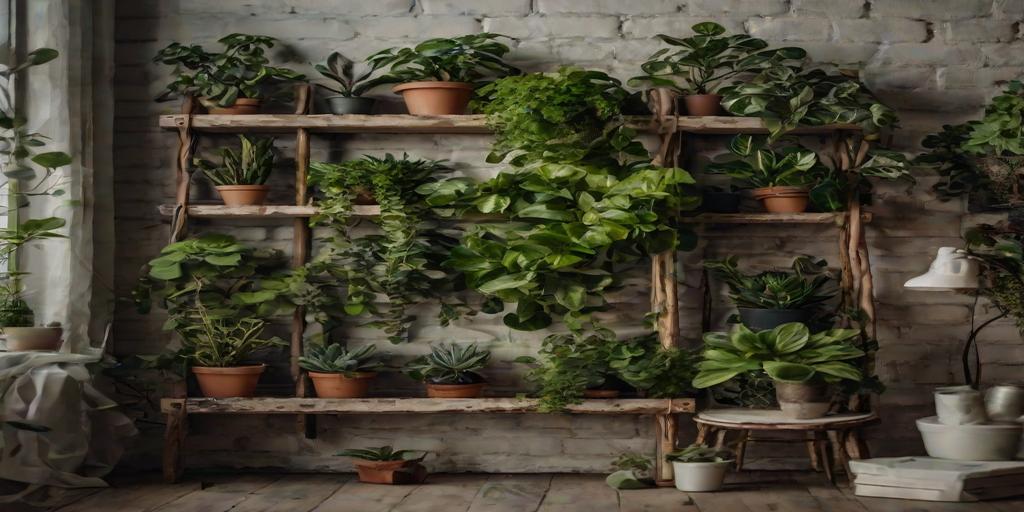
DIY Indoor Vertical Gardens with Low Light Plants: A Beginner’s Guide
Discover how to create a stunning DIY indoor vertical garden with low-light plants! Learn the best plants, setup tips, and maintenance tricks to transform your space—even in dim corners.
Introduction
Did you know that indoor plants can boost mood and purify the air—even in low-light spaces? If you’re tight on floor space or lack bright windows, a DIY indoor vertical garden with low-light plants is the perfect solution! Whether you’re a beginner or a seasoned plant lover, this guide will walk you through everything you need to create a lush, thriving green wall. Let’s dive in!
Why Choose a Vertical Garden for Low-Light Spaces?
Vertical gardens are perfect for small or dark rooms because they maximize greenery without taking up valuable floor space. Many low-light plants thrive with minimal sunlight, making them ideal for apartments, offices, or any space with limited natural light. Plus, vertical setups help keep your plants organized and visually appealing while saving room.
Best Low-Light Plants for Vertical Gardens
Snake Plant (Sansevieria)
Hardy and nearly indestructible, snake plants purify the air and can survive in very low light. Their upright growth makes them great for structured vertical designs.
Pothos (Epipremnum aureum)
Fast-growing and versatile, pothos vines can trail beautifully or climb a trellis. They adapt well to low light and require minimal care.
ZZ Plant (Zamioculcas zamiifolia)
Drought-tolerant and sleek, ZZ plants add a modern touch to vertical gardens. They thrive in dim conditions and need very little water.
Ferns (e.g., Boston Fern)
Lush and humidity-loving, ferns bring soft texture to vertical setups. They do best in indirect light and slightly moist soil.
Philodendron
With easy-care trailing varieties, philodendrons are perfect for hanging planters or wall-mounted pockets. They grow well in low to moderate light.
Materials Needed for Your DIY Vertical Garden
Structure Options
Choose from wall pockets, wooden pallets, hanging planters, or trellises depending on your space and style.
Soil & Drainage
Use a lightweight potting mix to avoid weighing down your structure. Ensure proper drainage with holes in planters or a layer of gravel.
Tools
Basic supplies like scissors, hooks, screws, and a watering can will help with installation and maintenance.
Optional Extras
If your space is extra dim, consider adding small grow lights to keep plants thriving.
Step-by-Step Guide to Building Your Vertical Garden
-
Choose Your Location
Pick a wall with indirect light—avoid direct sun, which can scorch low-light plants.
-
Install Your Structure
Secure planters, a vertical frame, or hanging systems firmly to the wall.
-
Plant Selection & Arrangement
Mix textures and growth habits for visual interest—place trailing plants at the top and bushier ones below.
-
Watering System
Use self-watering planters for convenience, or set a manual watering schedule to prevent overwatering.
-
Maintenance Routine
Prune dead leaves, fertilize occasionally, and check for pests to keep your garden healthy.
Creative Design Ideas for Vertical Gardens
Living Wall Art
Arrange geometric planters for a modern, artistic look that doubles as decor.
Herb Garden in the Kitchen
Grow compact herbs like mint or parsley in a vertical setup for easy access while cooking.
Tiered Shelves with Trailing Plants
Use floating shelves to create cascading greenery with pothos or philodendrons.
Repurposed Materials
Get creative with old ladders, shoe organizers, or gutters turned into unique planters.
Common Mistakes to Avoid
-
Overwatering Low-Light Plants
These plants need less frequent watering—check soil moisture before adding more water.
-
Ignoring Drainage Needs
Poor drainage leads to root rot. Always ensure excess water can escape.
-
Choosing Plants That Need More Light
Stick to low-light varieties to prevent leggy or dying plants.
-
Forgetting to Rotate Plants
Rotate them occasionally so all sides get even light exposure.
Conclusion
Creating a DIY indoor vertical garden with low-light plants is easier than you think! With the right plants, materials, and a little creativity, you can turn any dim corner into a vibrant oasis. Ready to start? Pick your favorite plants and get building—your urban jungle awaits!
